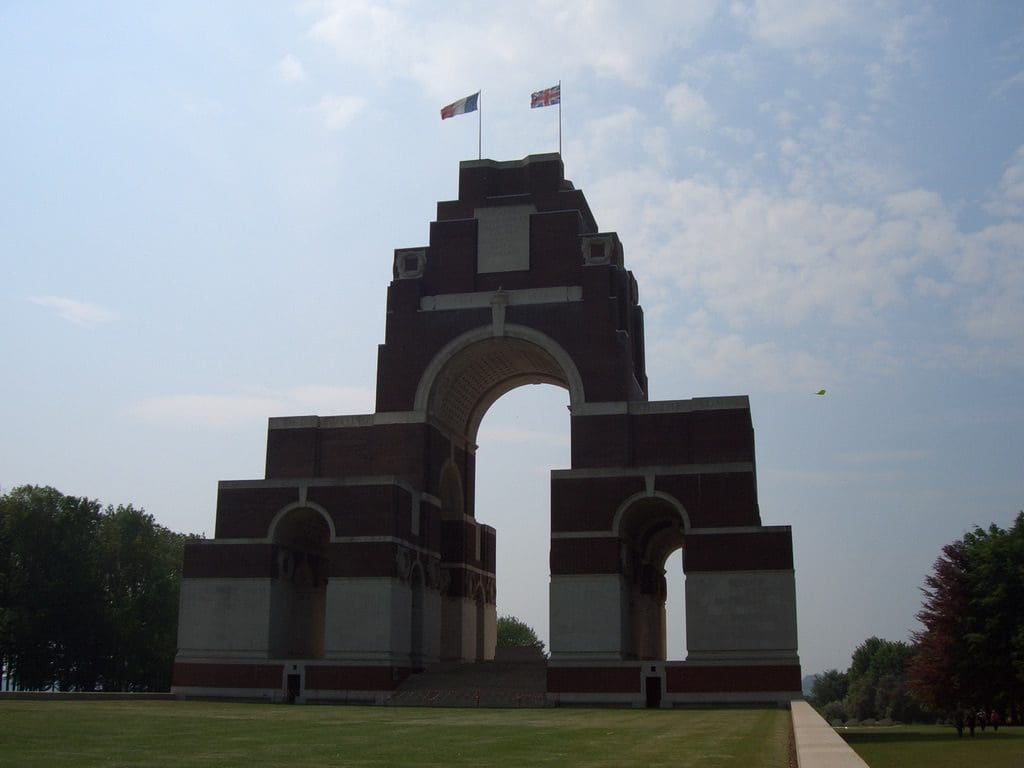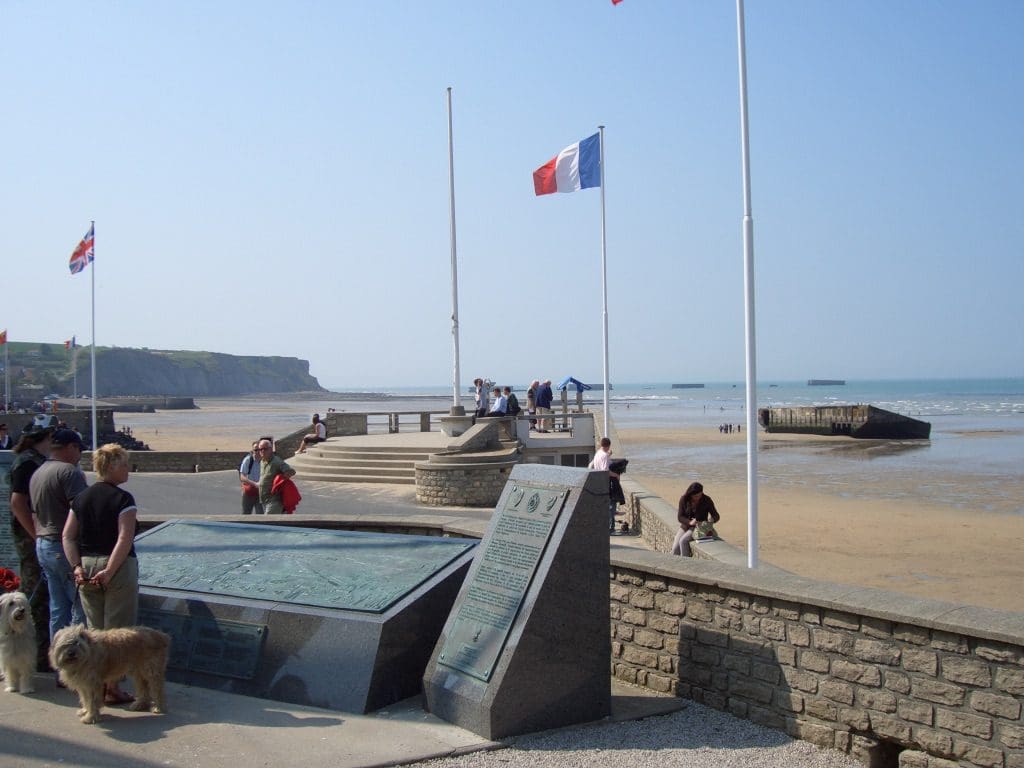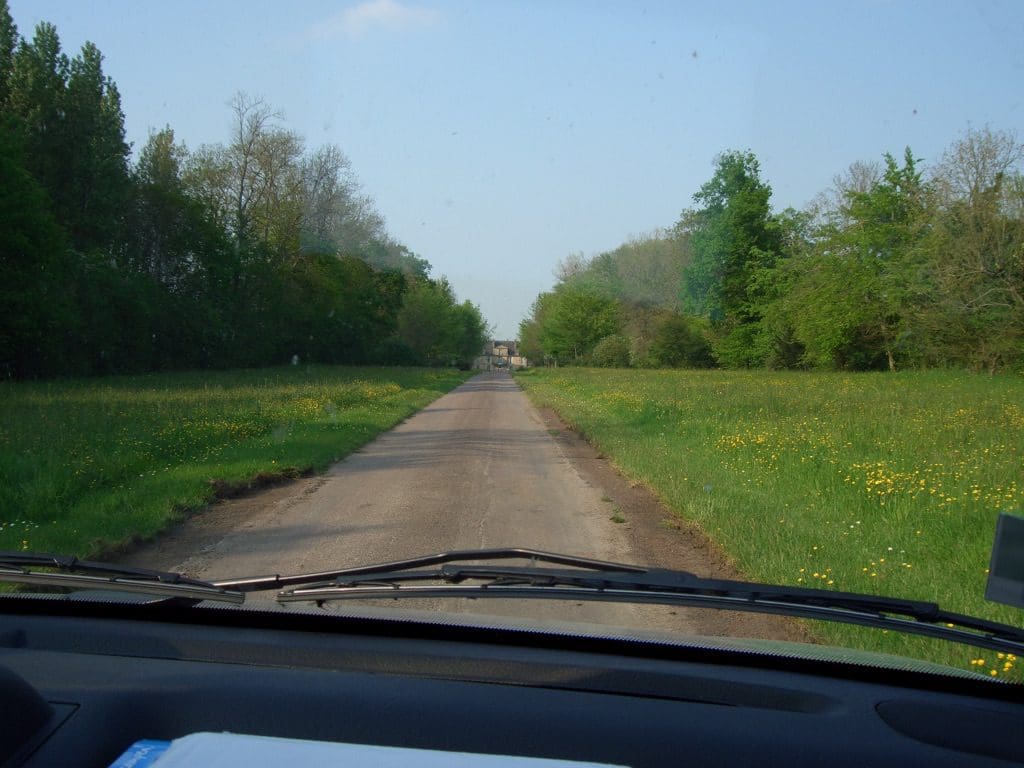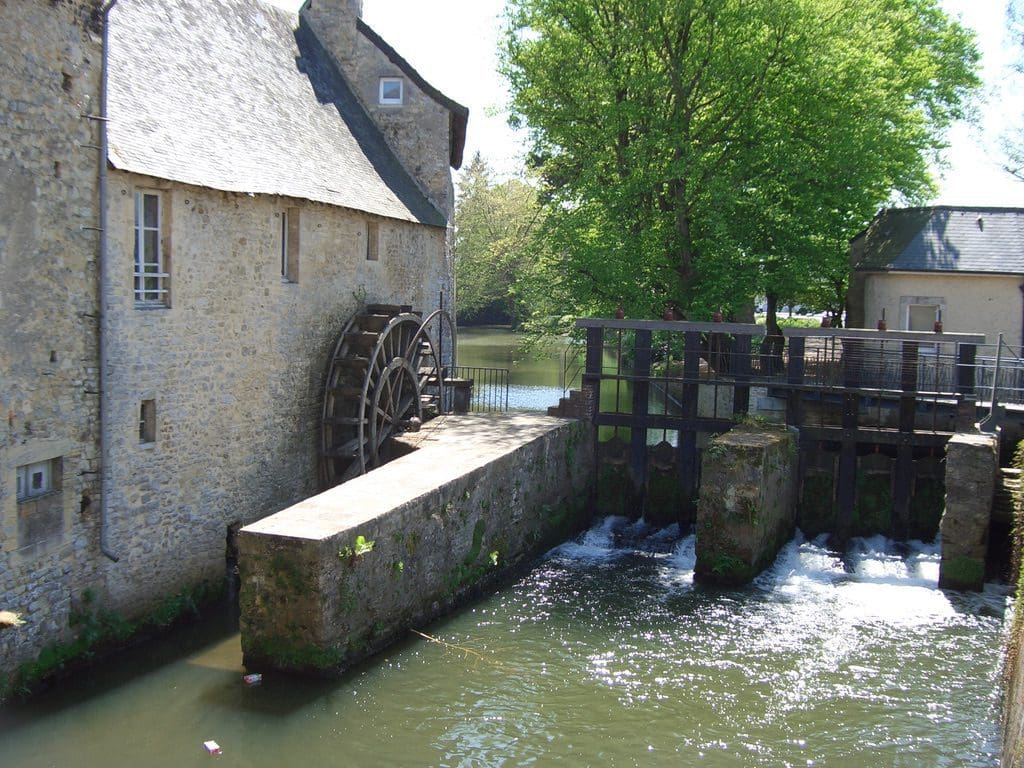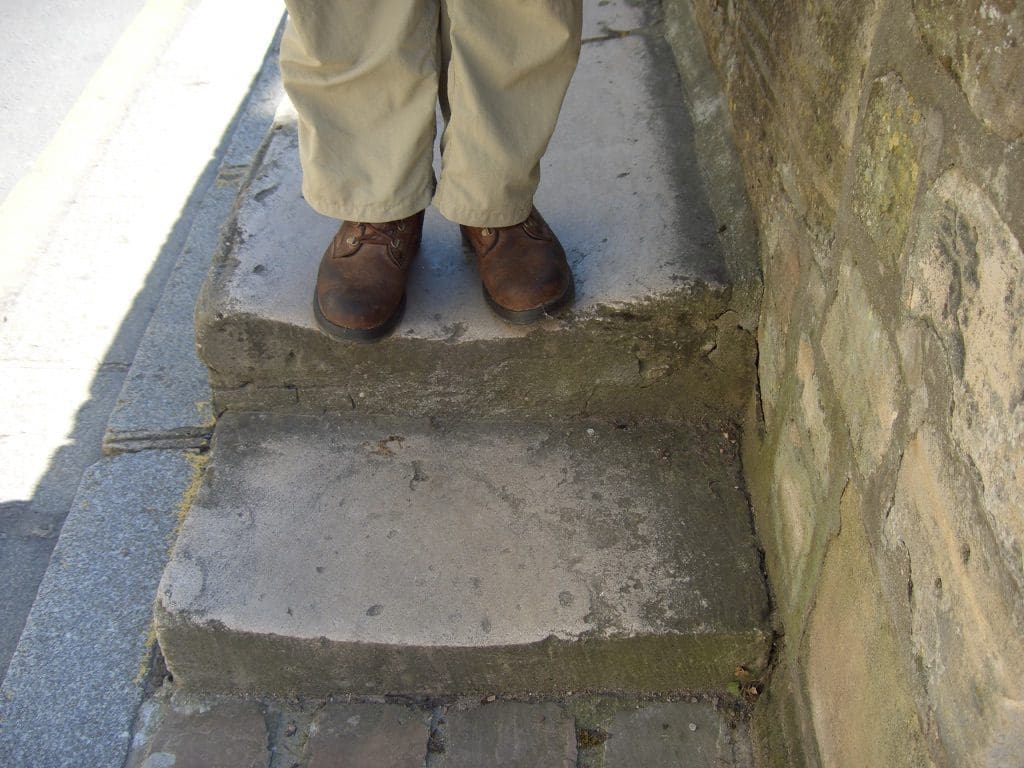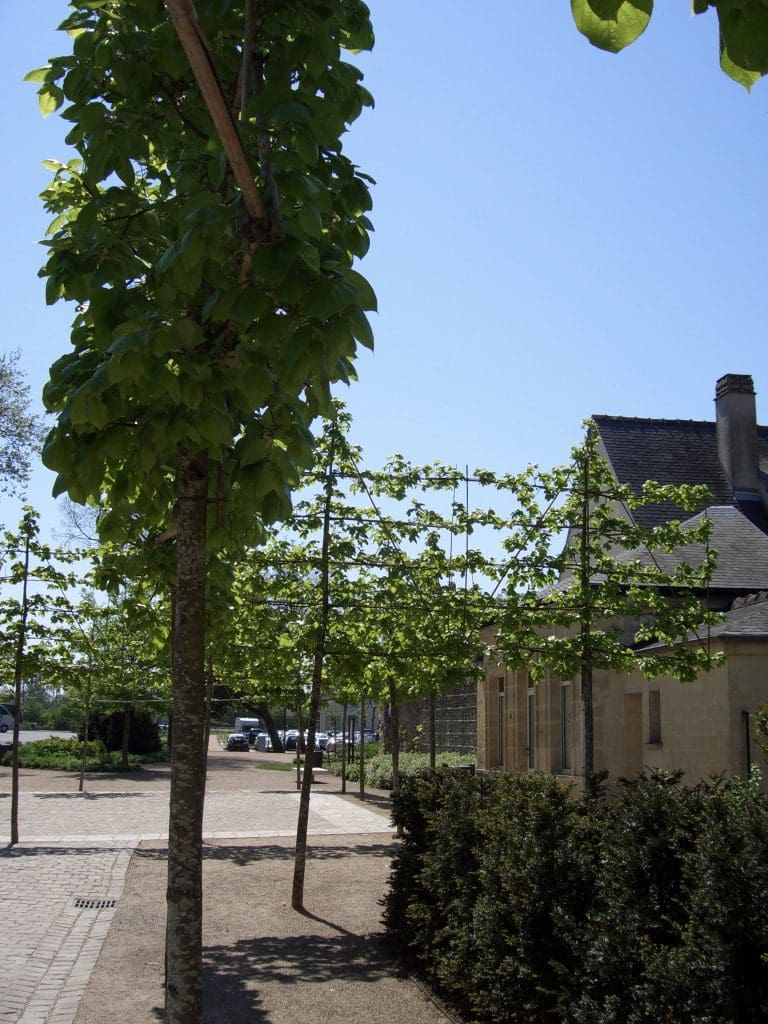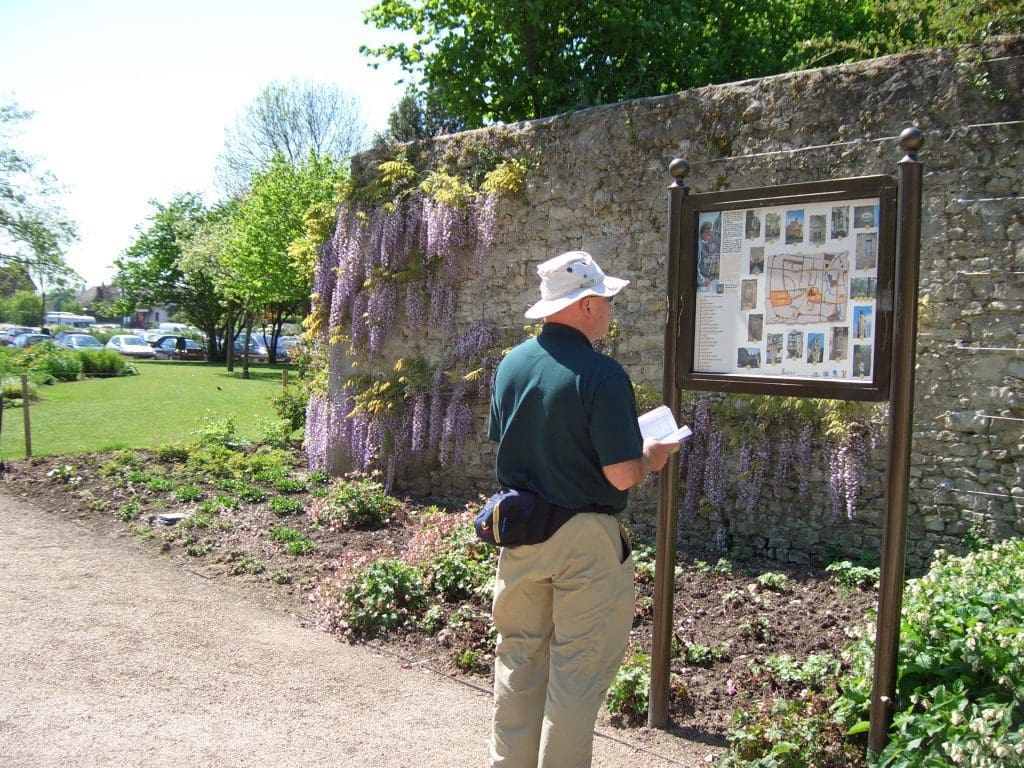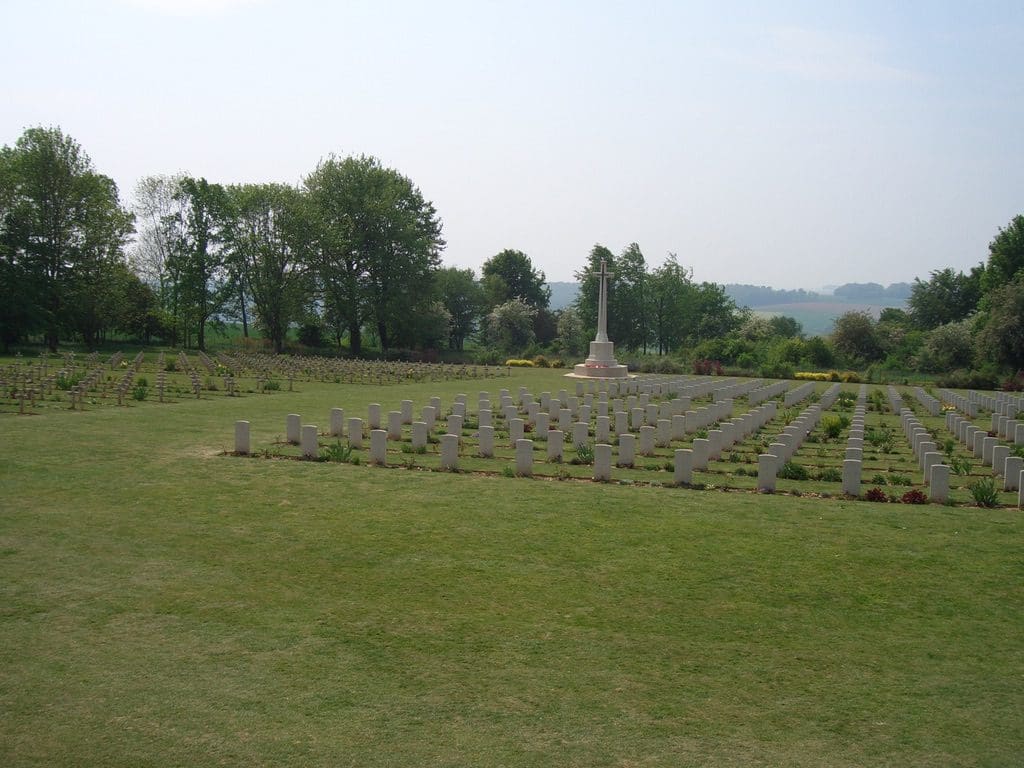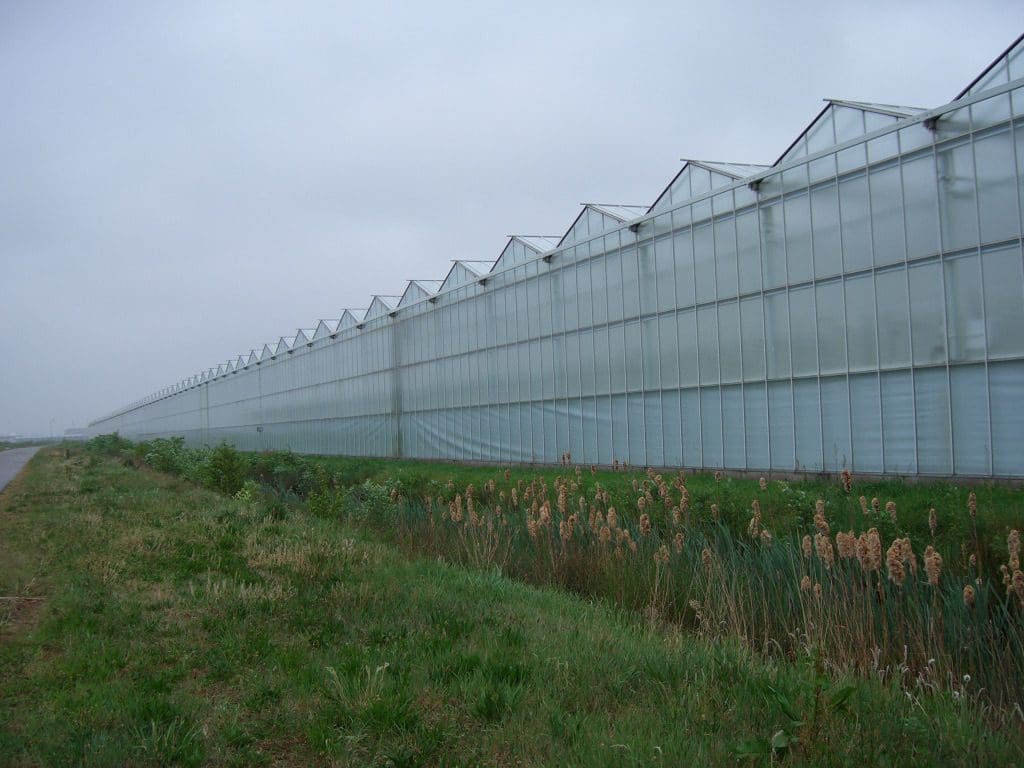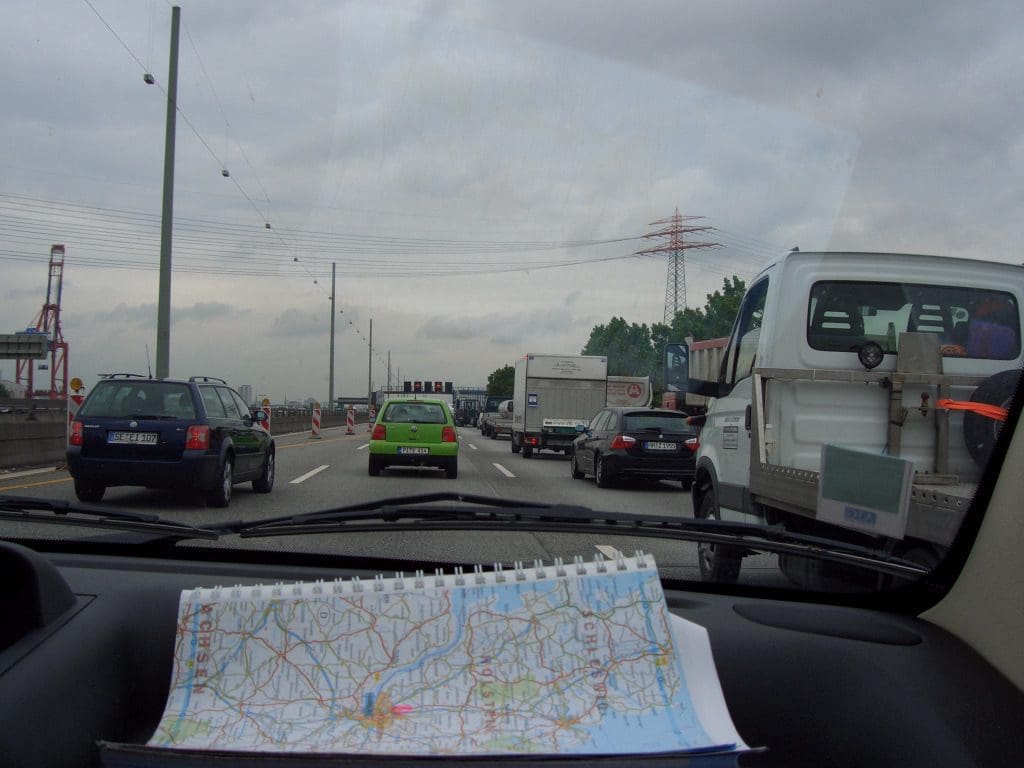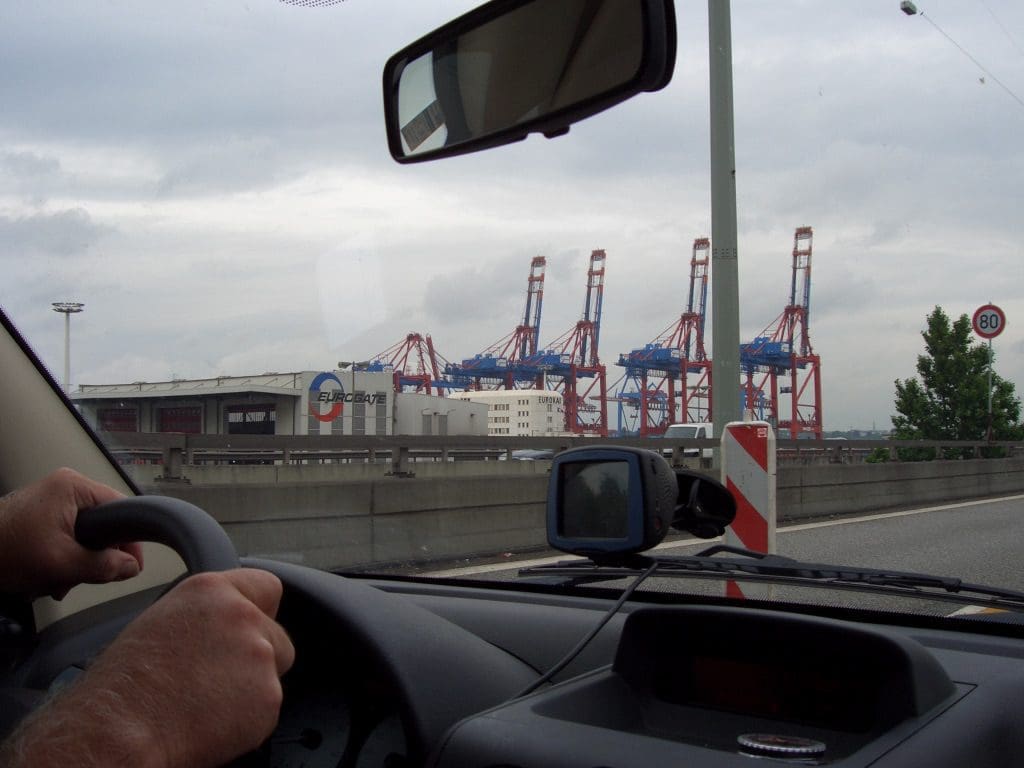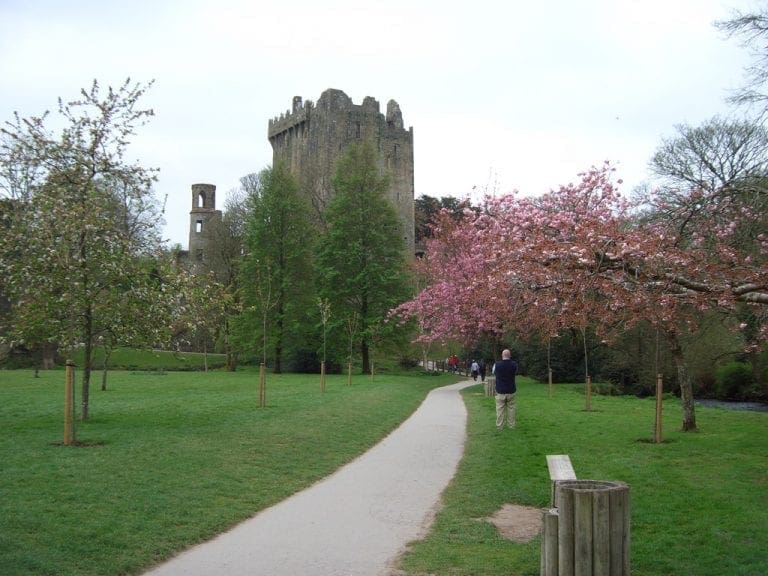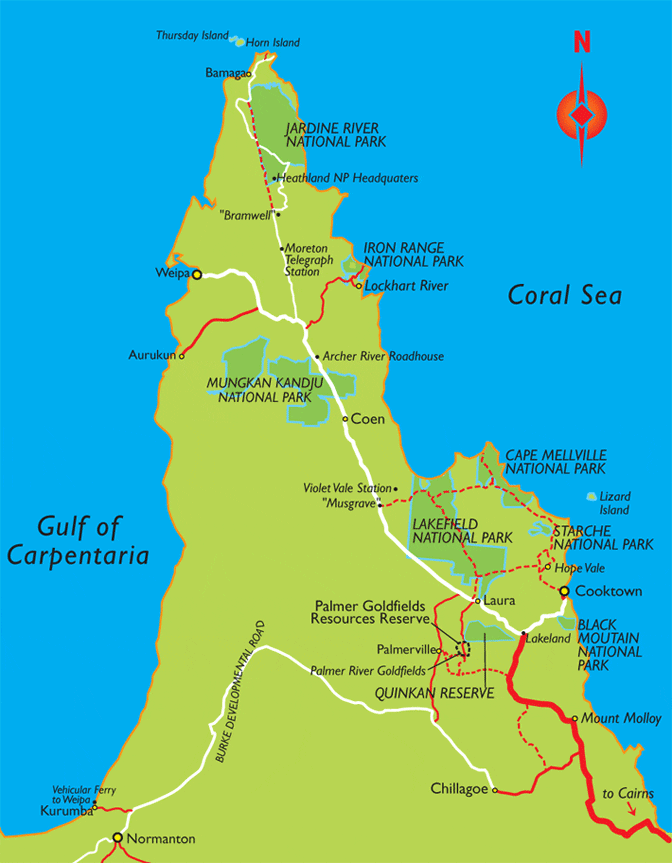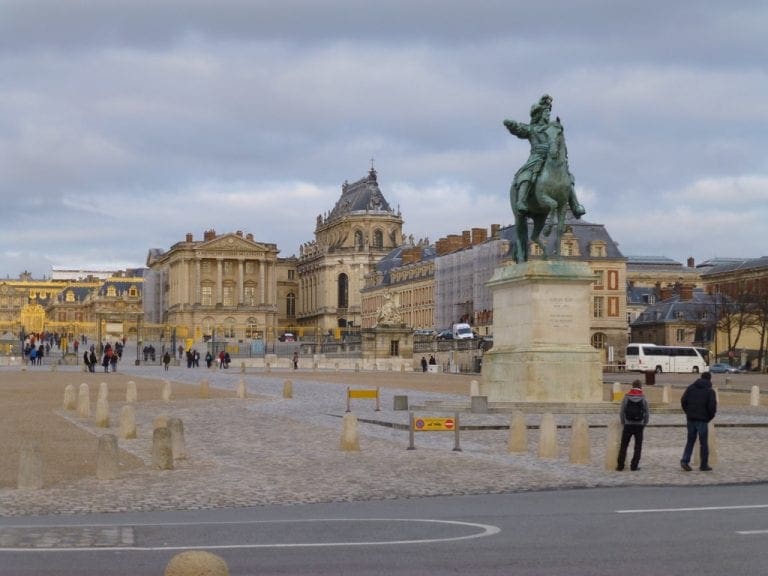Bayeux, Caen, Albert
1/5 Got off the ferry at 11:30 at Cherbourg – no passport check in site. All French shops shut. It is May day here. Drove down to the Normandy invasion beaches. First went to Point du hoc – a cliff lined position that held a commanding position over the d-day beaches. American ranges took this with considerable losses. We drove along Omaha beach. It is a huge expanse of sand with a cliff in front. This was the site of most lives lost on d-day. Then to Arromanche, the site of one of the portable harbours built by the brits to handle all the incoming logistics. In a few days, it handled 286,000 men, 120,000 tonnes and 50,400 vehicles. Impressive. To judge by the memorials, only Americans came ashore at Normandy. American flags and memorials on every corner. Nothing from Commonwealth or Brit forces. (This was a French holiday. Almost all the tourists were French. Extremely good to see them clambering all over these things.)
From there we made our way to our campsite in the grounds of a beautiful chateau (14 euro) at Martragny just to the east of Bayeux. Very friendly people. Their fist night of the season and our first night under the tent for the trip. The usual stuff about getting the tent up for the first time.
2/5 A mad day of museums. Bayeux tapestry. This is a 70 metre long comic strip that was commissioned in 1070 to tell the story of William and Harold. First, remember that these are all Vikings. The story is that when Edward the confessor (king of England) was old he announced that William of Normandy would be his heir. He sent Harold to William to tell him this. Harold got lost but eventually arrived in Normandy where William had Harold swear an oath (on everything he could round up) that Harold would abide by Edward’s wish and accept William as king of England. Edward dies when Harold returns to England. Harold abandons his oath and has himself made king of England. William gets the shits and decides to invade England to get his title. Battle of Hastings. Harold gets killed. Thereby proving that oath breakers do not prosper. A great story. (This was not the story we were told at school. To judge from what the Brits were saying around us, it was news to them too.) The tapestry is extremely impressive. And the display and video were good leading up to it.
From there, after plat du jour, we found the lace-making display. A room with women making lace. Each with a collection of tiny bodkins and pins. Fascinating. Could have watched it all day. A real highlight. They had some marvellous examples on the walls along with photos of some of their work on catwalks from some of the well known Paris fashion houses.
Then to Caen to see the peace memorial. Expensive at 15.50 euro each. However, this is a very impressive museum that tries to tell of the spiral into ww2, the horrors of war, occupation, collaboration (it is French), bombed cities, the possibilities of peace. Unfortunately, again the Americans took over the exhibit and apparently fought ww2 themselves. We were there 4 hours and saw about an eighth of it. A long day. Our ticket allowed us to return the next day but museums can be hard work and very tiring when you try to read and understand most things.
3/5 Drove from Martragny to Sailly-le-sec. On beautiful roads. Tolls were 20.60 euro. The French know how to build a good road. Some magnificent viaducts. Sailly-le-sec is just to the east of Villiers Bretonneax, scene of significant Australian fighting in 1918 that halted the German advance of March 1918 and turned the tide of ww1. We have beautiful campsite beside the Somme. Caught up on buying another lot of camping gear – a second chair that will save the now dented esky and airbeds to save the backs.
4/5 What a day. The airbeds worked and for a change Geoff got a good nights sleep. Not so good for Helen who felt the first stages of food poisoning from the salad at lunch yesterday. We set off to our battlefield tour (Salient Tours) and chose (wisely) the all day tour. A very moving experience. So many dead. Ian, a Scott guide in his kilt, took us around the sites associated with just one day – 1 July 1916. So many dead. So many memorials to them. Ended at the structure at Thiepval with 75,000 names of the unfound dead. Missing in Action. 75,000 that is an awful lot missing. Looking back, most of the cemeteries held very few (a few thousand) bodies. Most were missing. Never found in the carnage that this place was. We never did come to terms with the numbers. 5,000 dead – that is all of Murgon. 7,000 dead- that is all of Ayr plus some. 75,000 dead – that is most of Toowomba. 20,000 in a morning was normal. Guide Ian (ex British army) was extremely passionate about memorials, cowardice (no such thing, just threshold reached). A good tour. Unfortunately, we would have liked more of the Australian involvement. There is definitely room for an Australian tour of the WW1 sites in France. We have heard endlessly about Gallipoli. Has anything of the huge Australian achievements (and losses) in France/Belgium been mentioned to our younger generations. In some places the trenches are still showing as a different colour in ploughed fields and only a month ago while digging for extensions to a house they hit a 600 pound live bomb. There are still fields that people don’t go in – they graze sheep there. We walked along the side of a freshly ploughed field to get to one of the memorials and picked up bits of shell fragments just on the side of the road.
The tour was good. However, overwhelming. It would have been better to have a map with the locations shown and the dates. So easy to get lost and overwhelmed by the dead.
Immediately after leaving the tour, back in our own car, looking for cash machines, Geoff drove up over a cannonball that line the streets on Albert. (Stupid things just below vision) and ruptured something under the car. Some liquid came out. Bugger. We hope it is the windscreen washer. Helen is done in with the long day and a very loose stomach. To top it off it started to rain quite heavily so it tested out the tent and our patience by the end of the evening.
5/5 Very overcast this morning but not raining. The tent kept out the water and we learned some lessons about pitching it in bad weather for next time. Today was scheduled as R&R. Rose late after listening to the village church bells that ring every hour and the village donkey also added his two bits in the early hours. Helen is still keeping an eye open for toilets but much more settled that yesterday. Decided to chance it and went to a slightly larger village down the road for lunch. We are just getting used to the fact that everything closes at 12.30 for lunch and reopens at 2. We thought we would be safe (language wise) ordering the set “plat de jour”. The bloody French have now taken up the American system of choice and the very obliging waitresses have kindly slowed down – at least for the first sentence – while Helen picks up about 40% and Geoff about 10%. Our detailed knowledge of culinary vocabulary is sadly lacking. Thank heavens we eat just about everything. We try to order different things and share. So far, we have enjoyed all food. The delis are just amazing. Finding things in supermarkets is like a treasure hunt. We have an on going list. We finally found sugar today after several days searching. Milk is not usually stored in the fridges but in an entirely different area. Apparently there is a lot of uht milk. It definitely makes it easier for us to carry. Every switch, every washing machine and every tap is different. So far, we have only encountered one of the old style French flushing floor style loos. It was at a rest stop on a motorway so made sense for cleaning. However, the flushing was triggered by the door opening and closing so as you entered you were greeted by the whole floor being flushed in preparation for your visit. Somewhat disconcerting to a stranger who hovered over the footprints waiting to leap into action and escape before being caught in the next flush not knowing that it was triggered by the door. This afternoon is lovely warm shine again. The washing is dry and we have food supplies for tomorrow, so ready to hit the road again.
6/5 A day of driving on Motorways. We drove from the Somme area up past Ypres to Lille (horrendous traffic) then east to Holland. Our GPS lady is certainly useful. She accurately guides us through mazes of traffic signs, exits, keep right and left. Very good. She does have a problem in France. There, she has all ‘roads’ as being ‘roads’. We have been on a farm tracks. She also has a habit of getting lost at the worst possible time. ‘Exit right in 400 metres. Now keep … Lost satellite reception.’ Surrounded by trucks. Signposts pointing to everywhere. Mild panic in the car. Helen saying ‘Don’t go to Dortmund’. We went to Dortmund. As a result of one of that we had a 22 km detour. ‘Recalculating… Drive 11 km then make a u turn.’ One of the few interesting things along the way was the standard of the freeways. In France, beautiful – not a thing out of place, not a blemish of the pavement, not a pot hole or a wheel rut. In Belgium, looked just like at home – numerous patches, cracks, wheel ruts from trucks. In Holland, hundreds of signposts, hundreds of exits. For the night we are at one of the giant Dutch campgrounds – hundreds of sites – impersonal. A big difference from the past few nights.
7/5 It rained overnight and for most of the day – severely testing our ability to take the tent down in the rain and our driving on autobahn in the rain. A day of autobahns and trucks. Have never seen so many trucks – all in a line driving at 90-100kph. A difficult drive. Not the distance or the cars driving past at 150kph. (We mainly drive at 105 on cruise control.) It is the wall of trucks that take up all of one lane. At one point, we drove passing a continuous line of trucks at 120-130kph for about 15 mins. That means (taking the differential as 30kph) we passed the equivalent of a stationary line of trucks that was 7.5 km long – nose to tail. That is a lot of trucks. Overall, due to hold-ups in the traffic, we lost 2 hours to the traffic. Mainly because of road works and merging lanes. The campground at Hamburg is excellent – friendly owner, very good amenities. Raining. Had an excellent Greek meal. Went very well until Helen asked the olive skinned girl who looked to part of the ownership if she ‘had Greek relatives’. ‘No I am German, not Greek’. Almost go thrown out.
8/5 A longish day driving from Hamburg to Kopenhaven – 450km. Not so much traffic. Over a fantastic bridge (with a $40 toll) linking the main peninsular of Denmark with the island that Kopenhaven is on. Lots of farmland with canola in brilliant yellow flower contrasting with green shoots of a grain crop. We expected to see cows out in the fields but they are kept in the huge barns that surround every farm house. A French car passed us as we approached Kopenhaven and gave us a friendly toot in recognition of the “F” on the back of the car. We happily waved back, laughing merrily at our disguise. Anders (one of the guys that Geoff came to meet with) came to see us as we were putting up the tent. He took a look of horror at our small abode and immediately took us off for a coffee in the hope of warming us. We actually slept very well and kept warm. The weather cleared during the night but started to rain again early in the morning.
